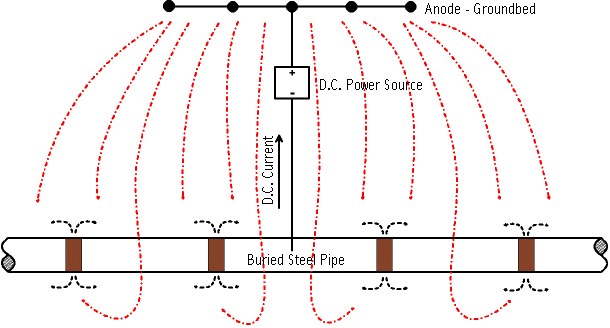QUICK NAV:
Impressed Current Cathodic Protection
Impressed current cathodic protection involves the application of an external DC current through long-lasting anodes. A typical source of power for an impressed current system is AC power converted to DC by a rectifier.
In order to be effective, impressed current anodes must be designed for long life at high current output. This requires selection of materials with very low corrosion (consumption) rates. The typical expectation of impressed current anode life is over twenty years. Anode materials that have proven to be suitable for impressed current systems include treated graphite, high silicon cast iron, mixed metal oxide, and to a lesser extent platinum and magnetite. Anodes are normally installed in grouped configurations in the electrolyte. These groupings (both horizontal and vertical) in an underground application are called grounded. The groundbeds are connected to the power by a positive cable to the power source. A negative cable connects the power source to the structure.

Advantages of impressed current systems include the unlimited current opportunities and longer life. Impressed current systems are typically installed where the structure to be protected is large, requiring higher levels of current.
Disadvantages include the requirement for an outside power source and higher maintenance requirements. Outside power might come from sources such as commercial AC converted to DC through a rectifier, thermoelectric generator, or solar panels. A significantly higher monitoring and maintenance effort is required by comparison to sacrificial anode systems.





